Introduction
Ginkgo biloba chicken stew, a cherished dish in Chinese cuisine, blends tender chicken, earthy ginkgo nuts, and aromatic herbs into a nourishing broth that warms both body and soul. This home-style recipe, rooted in tradition, is celebrated for its delicate balance of flavors and health benefits. Often prepared during cooler months or family gatherings, the stew embodies the essence of comfort food—simple yet profoundly satisfying. Whether you’re a seasoned cook or a novice in the kitchen, this guide will walk you through crafting a pot of golden, fragrant stew that captures the heart of home-cooked goodness.
The Allure of Ginkgo Biloba
Ginkgo biloba nuts, derived from the ancient ginkgo tree, are a star ingredient in this dish. Revered in traditional Chinese medicine for their potential cognitive and cardiovascular benefits, these nuts add a unique texture—slightly chewy with a subtle sweetness—to the stew. When cooked, they release a mild, nutty aroma that complements the richness of the chicken. Fresh ginkgo nuts are preferred, but canned or vacuum-sealed varieties offer a convenient alternative. However, exercise caution: raw ginkgo nuts contain trace amounts of toxins, so thorough cooking is essential to neutralize any risks.
Selecting the Right Chicken
The foundation of any great stew lies in the quality of its ingredients. For this recipe, opt for a whole chicken (approximately 3–4 pounds) or bone-in, skin-on chicken pieces like thighs and drumsticks. Bone-in cuts impart deeper flavor, as the marrow enriches the broth during simmering. Free-range or organic chickens yield a cleaner taste, but conventional varieties work equally well. If using a whole chicken, consider chopping it into smaller pieces for even cooking and easier serving.
Ingredients: Assembling the Essentials
To recreate this timeless dish, gather the following ingredients:
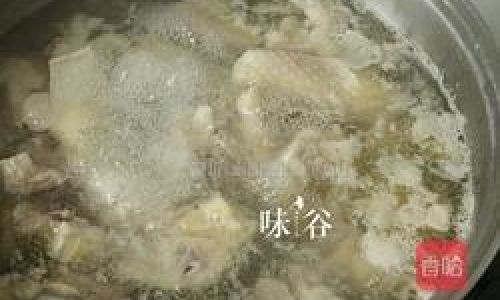
- 1 whole chicken (3–4 lbs) or 6–8 bone-in, skin-on chicken pieces
- 1 cup fresh ginkgo biloba nuts (or ½ cup canned, drained)
- 8 cups water (or low-sodium chicken broth for added depth)
- 3–4 slices fresh ginger
- 2 tablespoons Chinese cooking wine (Shaoxing wine preferred)
- 1 tablespoon soy sauce (light soy for subtle saltiness)
- 1 teaspoon sesame oil
- 1 tablespoon goji berries (optional, for sweetness)
- 4–5 dried red dates (jujubes, optional, for natural sweetness)
- 1 teaspoon white pepper
- Salt to taste
- 2 tablespoons vegetable oil
- Chopped green onions and cilantro (for garnish)
Preparing the Ginkgo Nuts
If using fresh ginkgo nuts, start by cracking their shells. Gently tap each nut with the flat side of a cleaver or a nutcracker, being careful not to crush the inner kernel. Remove the shells and peel away the brown outer skin. Blanch the nuts in boiling water for 2–3 minutes to soften their texture and eliminate bitterness. Drain and set aside. For canned ginkgo nuts, simply rinse and drain.
Marinating the Chicken
Pat the chicken dry with paper towels. In a large bowl, combine the chicken pieces with 1 tablespoon of Chinese cooking wine, 1 teaspoon of soy sauce, and 1 teaspoon of sesame oil. Toss to coat evenly, then let marinate for 20–30 minutes. This step tenderizes the meat and infuses it with aromatic undertones.
Sautéing the Chicken
Heat 2 tablespoons of vegetable oil in a heavy-bottomed pot or Dutch oven over medium heat. Add the ginger slices and stir-fry for 30 seconds until fragrant. Increase the heat to medium-high, then add the marinated chicken, skin-side down. Sear until golden brown (4–5 minutes per side), which locks in juices and enhances flavor. Avoid overcrowding the pot; work in batches if necessary.
Simmering the Stew
Once the chicken is browned, return all pieces to the pot. Pour in 8 cups of water or broth, ensuring the chicken is submerged. Add the remaining soy sauce, white pepper, goji berries, and dried red dates (if using). Bring the liquid to a boil, then reduce the heat to low. Cover and simmer gently for 45 minutes, allowing the flavors to meld.
Incorporating the Ginkgo Nuts
After 45 minutes, add the prepared ginkgo nuts to the pot. Continue simmering for an additional 20–25 minutes, or until the chicken is tender and the nuts are soft but not mushy. Avoid stirring too vigorously, as this may break apart the chicken pieces.
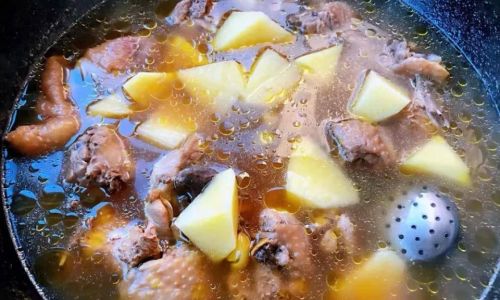
Seasoning and Finishing Touches
Taste the broth and adjust seasoning with salt as needed. For a touch of richness, drizzle with sesame oil. Ladle the stew into serving bowls, ensuring each portion includes chicken, ginkgo nuts, and broth. Garnish with chopped green onions and cilantro for a burst of freshness and color.
Serving Suggestions
This stew pairs beautifully with steamed jasmine rice, which absorbs the flavorful broth. For a heartier meal, serve alongside hand-pulled noodles or glutenous rice cakes. A side of stir-fried greens, such as bok choy or spinach, adds a refreshing contrast to the rich stew.
Tips for Perfecting the Dish
- Avoid Overcooking Ginkgo Nuts: Overly soft nuts lose their texture; test for doneness by piercing with a fork—they should yield slightly but retain their shape.
- Skim Impurities: While simmering, occasionally skim off any foam or impurities that rise to the surface for a clearer broth.
- Adjust Cooking Time: Older chickens may require longer simmering (up to 1.5 hours) to tenderize, while younger birds cook faster.
- Enhance Flavor: For deeper complexity, roast the chicken bones before simmering or add a star anise pod during cooking.
Health Benefits and Cultural Significance
Beyond its culinary appeal, ginkgo biloba chicken stew holds cultural significance as a symbol of nourishment and family unity. In Chinese tradition, ginkgo nuts are believed to promote vitality, while chicken represents prosperity and wholesomeness. This dish is often served during autumn and winter festivals, such as the Mid-Autumn Festival or Lunar New Year, to honor heritage and gather loved ones.
Variations and Modern Twists
While the classic recipe is timeless, feel free to experiment:

- Vegetarian Adaptation: Substitute chicken with king oyster mushrooms or tofu, and use vegetable broth.
- Spicy Kick: Add sliced chili peppers or a dash of Sichuan peppercorn oil for heat.
- Herbal Infusion: Incorporate astragalus root or codonopsis for an immune-boosting twist.
Storing Leftovers
The stew keeps well in an airtight container in the refrigerator for up to 3 days. Reheat gently on the stove, adding a splash of water if the broth thickens. Freeze portions for up to 3 months; thaw overnight before reheating.
Conclusion
Ginkgo biloba chicken stew is more than a meal—it’s a labor of love, a bridge between generations, and a testament to the beauty of simplicity. With its golden broth, tender chicken, and jewel-like ginkgo nuts, this dish invites you to slow down, savor each spoonful, and appreciate the art of home cooking. Whether enjoyed on a chilly evening or shared at a festive table, this stew embodies the warmth and comfort that food brings to our lives. So gather your ingredients, embrace the process, and let the aroma of tradition fill your kitchen.
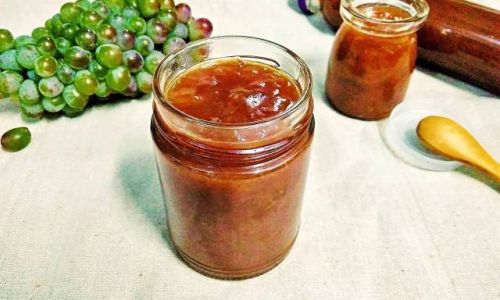

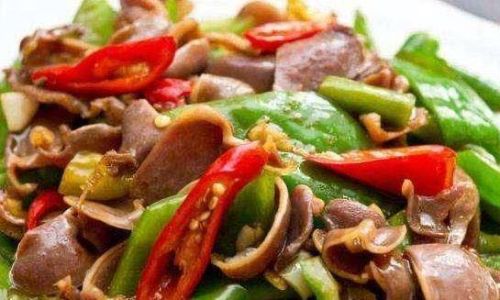

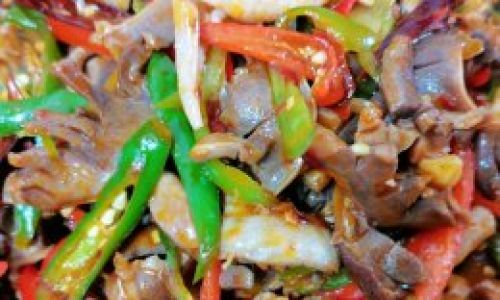
0 comments